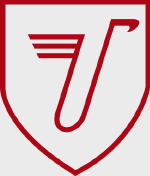Corgi AA35711 German Messerschmitt Me 262A-1A Fighter - Leutnant Walter Hagenah, "Yellow 17", Jagdgeschwader 3 "Udet", Germany, 1945 (1:72 Scale)
"It was as if an angel is pushing you..."
- Adolf Galland, discussing his first flight in the Me 262 jet fighter
 The jet-powered Me 262 Sturmvogel ("Stormbird") has long since gained its place in the annals of international aeronautical history. With its sleek aerodynamic design and high performance jet engines, the Me 262 radically changed the way in which air combat was waged.
The jet-powered Me 262 Sturmvogel ("Stormbird") has long since gained its place in the annals of international aeronautical history. With its sleek aerodynamic design and high performance jet engines, the Me 262 radically changed the way in which air combat was waged.
The first design work on the Me 262 began in October 1938, with the first test flight, piloted by Fritz Wendel, occuring on April 18th, 1942. Tests continued well into 1942, although by this time the Me 262 was outfitted with two highly-efficient BMW turbojet engines. When he saw the aircraft for the first time in early 1943, Hitler insisted that the plane be designed as a low-level bomber instead of a fighter, which undermined the sleek aerodynamic properties of the jet aircraft. After much in-fighting among the Luftwaffe's upper echelons, the plane was eventually converted back into a high level interceptor, with series production beginning in the spring of 1944. The first jet fighter unit, commanded by Major Walter Nowotny, was formed in the summer of 1944 and was composed of many of the Luftwaffe's leading aces.
By war's end, 1,433 Me 262s had been produced, far too few a number to have much of an impact on the Allies strategic bombing campaign. In the end, the Allies' superiority in numbers overcame the tremendous technical achievements ushered in by the Me 262 program.
Pictured here is a 1:72 scale replica of a German Messerschmitt Me 262A-1A fighter that was piloted by Leutnant Walter Hagenah, who was attached to Jagdgeschwader 3 "Udet", then deployed to Germany during 1945.
Now in stock!
Dimensions:
Wingspan: 6-3/4-inches
Length: 5-3/4-inches
Release Date: January 2024
 Historical Account: "Aloft Anew" - Direct interference from senior military commanders severely restricted the effectiveness of the Messerschmitt Me 262 jet, as they procrastinated about whether it should be used as a fighter, or a bomber. Luftwaffe pilot Franz Gapp perfectly illustrated this problem - a highly decorated bomber pilot, who flew more than 400 missions, mainly in the Ju-88 fighter-bomber, Gapp transferred to an Me 262 attack unit, where it was hoped the speed of the new jet would see significant strategic bombing successes.
Historical Account: "Aloft Anew" - Direct interference from senior military commanders severely restricted the effectiveness of the Messerschmitt Me 262 jet, as they procrastinated about whether it should be used as a fighter, or a bomber. Luftwaffe pilot Franz Gapp perfectly illustrated this problem - a highly decorated bomber pilot, who flew more than 400 missions, mainly in the Ju-88 fighter-bomber, Gapp transferred to an Me 262 attack unit, where it was hoped the speed of the new jet would see significant strategic bombing successes.
One of the most interesting engagements involving a Messerschmitt Me 262 jet fighter during WWII occurred on April 10th, 1945, when pilot Lt Walther Hagenah and his wingman were ordered to intercept a heavy raid of USAAF bombers attacking an area north of Berlin. Knowing they would be massively outnumbered by Allied aircraft, the pair intended to attack the formation at high speed, using cannon and their underwing mounted R4M unguided rocket projectiles to break up the formation and spread confusion.
With the mighty bomber stream in sight, Hagenah noticed a flight of six American P-51D Mustangs above them, which immediately dropped their external fuel tanks as they dived in to attack. Hagenah's experience told him that if he turned to face them, or made any violent evasive maneuver, the speed of the Mustangs would soon bring him into their gunsights, so instead, he pushed the throttles to full power and began a gentle dive towards the ground, but crucially, not changing heading.
His wingman decided to take a different course of action, turning to face the Mustangs and immediately being enveloped in a hail of .50 calibre bullets. With his own jet now at full speed, Hagenah expertly positioned his Messerschmitt for an attack on the American fighters, opening up on them with everything he had, including ripple-firing his R4M rockets at the enemy fighter formation. In his memoirs, he later recalled how two of the Mustangs were hit by rockets and immediately fell out of the sky, but having made his defiant gesture, he now needed to find the nearest Luftwaffe airfield, as he was dangerously low on fuel. Unfortunately, the airfield at Larz was under attack by swarms of strafing USAAF fighters, but with his fuel situation now critical, he had no option but to land the jet with American fighters still in the overhead.
Combat record keeping at this stage of the war has proved notoriously difficult to corroborate historically, particularly when it came to those submitted by Luftwaffe pilots and despite the availability of Hagenah's personal recollection in this case, he would only be credited with a single Mustang victory during this engagement. Corresponding USAAF records did little to help corroborate his claims, even though reports filed from the American bombers they were ordered to attack did confirm the presence of rocket carrying Messerschmitt Me 262 jets on the day in question.
In fact, even the individual aircraft Hagenah used for this sortie cannot be definitively corroborated, however 'Yellow 17' was one of the jets on the airfield that day and was also one of the machines equipped with the R4M rocket projectiles. One of the most unusual combat engagements of the Second World War, it is thought that this was the only time a USAAF fighter was brought down during an operational sortie using an unguided rocket projectile fired from a Messerschmitt Me 262 jet. If Lt. Hagenah's account is to be believed, the April 10th,1945, encounter witnessed a truly unique combat engagement in the skies above Berlin.


